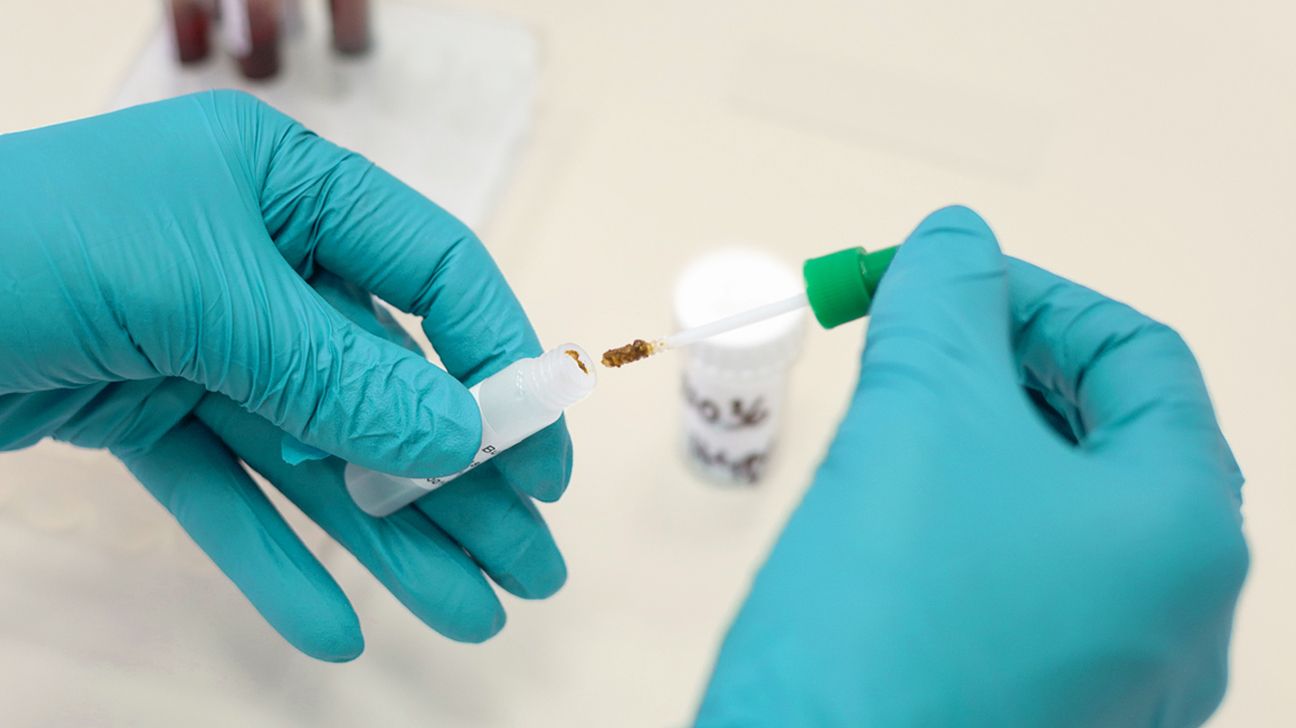Everything You Need to Know About Stool Samples If You Live with IBD
September 02, 2021
Content created for the Bezzy community and sponsored by our partners. Learn More

Jovana Milanko/Stocksy United
Collecting your first stool sample may feel daunting, but it’s a painless, quick, and noninvasive way for your doctor to see what’s going on in your digestive system.
Stool samples — aka fecal cultures or stool cultures — are pretty familiar to people living with inflammatory bowel disease (IBD). As someone living with Crohn’s disease, I’ve had to collect stool samples plenty of times.
But while stool samples are painless, quick, and simple, if you’ve never collected a sample before, it can feel a little daunting.
Understanding what a stool sample consists of, and what information it can provide your doctor, can help you feel more confident and prepared for your first one.


What does a stool sample involve?
A stool sample can be used to help your doctor better understand what’s going on in your digestive tract.
In order to perform a stool culture, your doctor will give you a collection tube and request that you collect a small sample of your stool when you use the bathroom. Once you return the sample to your doctor, it will then be sent to a lab for testing.
Why are stool samples used for IBD?
One of the trickiest things about living with IBD is that we often can’t get a true picture of what’s going on in our digestive tract when we’re having symptoms.
Tests like CT scans, colonoscopies, and capsule endoscopies are vital because they help doctors visualize what’s going on internally. However, these tests can’t be performed regularly.
CT scans carry some risk of radiation exposure, and colonoscopies and endoscopies are relatively invasive.
While a stool culture can’t provide imaging like these tests do, it can give doctors similar insights into what’s happening in the digestive tract in a safe, quick, and less invasive way.
Stool cultures are performed for many different purposes. One of the most common uses of stool samples among IBD patients is to test for faecal calprotectin.
Faecal calprotectin is a protein that doctors track in order to measure inflammation in your gastrointestinal tract. Doctors use this test when diagnosing patients in order to differentiate between IBD and other conditions like irritable bowel syndrome (IBS).
Using a stool sample to check for faecal calprotectin can sometimes provide more specific insights than a blood test, which only measures general inflammation throughout the whole body.
While a single stool sample can’t diagnose IBD, regular tests (every few months or so), can be useful in monitoring disease activity. This can help your medical team better predict if a flare is coming.
Stool samples can also be used to test for other digestive health concerns, such as bacterial or parasitic infections.
How to collect your first stool sample
The prospect of having to collect your first stool sample can feel overwhelming. Here are the steps I take to make the process stress-free:
Preparation
You may not get much of a warning before you need to poop, so I prefer to get everything prepped beforehand. This way, if I suddenly need to use the toilet, I’m ready.
The morning of my test, I get everything prepped in my bathroom:
- a small rectangle box that I use to collect the stool
- the test tube provided by my doctor
- wipes and gloves to handle the sample
You may also need to fill in information like your name and date of birth on the tube itself, so your doctor can identify your sample. I like to have this all completed beforehand as well.
Collection
When using the toilet, I wear rubber gloves and use a plastic tub, or bedpan, to collect the stool. I try to find something as wide as possible to make it easier to catch the stool when it comes out. Some people prefer to spread plastic wrap loosely across the toilet seat to catch the stool instead.
It’s also really important to make sure your stool does not come into contact with urine. Make sure to urinate before, or after, collecting the stool.
Once you’ve collected your sample, you’ll need to scoop a small piece to place in the tube. Usually the tube will come with a small plastic spatula. You can use this to press down the sample as much as possible so that you’re able to securely seal the tube.
You don’t need to worry about filling the tube completely. Most doctors will tell you that a piece of stool around the size of a walnut will be enough.
Clean up
After I’ve collected my sample and fully sealed the tube, I wash my hands. Then I make sure to thoroughly wipe down the tube and double-check it has all my information clearly written on it.
This may sound obvious, but I mention it because once, I managed to send my stool sample off without filling out my information. I had to do it all over again!
Drop off
Ideally, you’ll want to drop the sample off as soon as possible after collecting it, but you probably don’t need to head out immediately.
Storage of the sample depends on what exactly your doctor is testing for, so it’s a good idea to check with them in advance. If your doctor is testing for bacteria, it’s important to get it to the doctor as quickly as possible or to keep it refrigerated until you can drop it off.
If it’s a faecal calprotectin test, then it’s usually not necessary to refrigerate the sample. I personally try to complete the sample first thing so I can drop it off on the way to work in the morning.
What do the results of the stool culture mean?
It can take anywhere from a few days to a few weeks to receive your results, depending on what’s being tested for.
Some results are straightforward: For example, if you’re being tested for a certain bacterial infection, you’ll be told if it’s positive or negative.
Faecal calprotectin, however, is reported as a numerical value. This means that your doctor will be comparing your most recent test results to past test results in order to determine if anything has changed.
In general, a faecal calprotectin concentration of 10–50 or 60 μg/mg is in the “normal” range. But some people with IBD may find that a score in the low hundreds is normal for them.
In my experience, faecal calprotectin results don’t always correlate with the extent of disease activity. I have experienced a very high faecal calprotectin score, close to 1,000 μg/mg, when an MRI showed only minimal inflammation.
Some patients may have high levels of faecal calprotectin without experiencing any symptoms of a flare-up, which can be puzzling. This is why observing patterns in your test results is more helpful than looking at a single result.
Your doctor will be able to interpret your most recent results in the context of your medical history.
The bottom line
While stool cultures can’t replace imaging tests, they’re painless, convenient, and can be performed regularly because they’re noninvasive.
Testing stool samples is a useful way for doctors to better understand what’s going on in your digestive system in order to help you manage your symptoms.
Preparing to collect your first stool sample may feel stressful or overwhelming. Taking steps to make the experience as quick and easy as possible can help you feel more confident.
It can also help to talk to others with IBD who are familiar with the process. The Bezzy IBD community is a great resource to help answer questions you have about stool samples or any other medical procedures with IBD.
Article originally appeared on September 2, 2021 on Bezzy’s sister site, Healthline. Last medically reviewed on September 1, 2021.
Medically reviewed on September 02, 2021
2 Sources


Like the story? React, bookmark, or share below:
Have thoughts or suggestions about this article? Email us at article-feedback@bezzy.com.
About the author